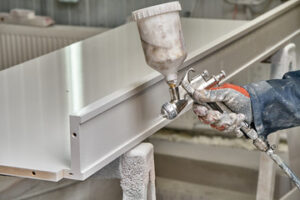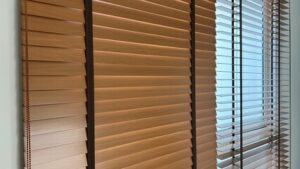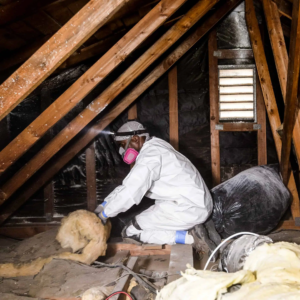Cabinet Painting Sacramento is an effective way to give your home a fresh, updated look without the high cost of replacing cabinetry. Whether you are looking to modernize your kitchen, bathroom, or other living spaces, painting cabinets can completely transform the appearance and feel of a room.

Cabinets are a prominent feature in any space, and a fresh coat of paint can breathe new life into a dated or worn-out design. This process allows homeowners to customize their interiors, choosing colors and finishes that reflect personal style while enhancing the overall atmosphere of the room. With the right techniques and materials, cabinet painting can deliver professional-quality results that last for years.
Proper preparation is essential for achieving a smooth and durable finish when painting cabinets. Cleaning the cabinets thoroughly to remove dirt, grease, and residue is a crucial first step. Over time, cabinets accumulate layers of grime from cooking, handling, and general use, which can prevent the paint from adhering properly. A degreasing solution and warm water can help eliminate buildup and create a clean surface for painting. Once the cabinets are clean and dry, removing the hardware and doors makes it easier to reach all areas and ensures a more even application of paint. Labeling each piece helps simplify the reassembly process and avoids confusion once the painting is complete.
Sanding the cabinet surfaces is another critical step in the preparation process. Lightly sanding the wood or existing finish creates a textured surface that allows the paint to adhere better. For previously painted or varnished cabinets, using a medium-grit sandpaper helps remove the glossy finish and provides a rough surface for the new paint to grip. After sanding, wiping down the cabinets with a damp cloth removes dust and debris, ensuring a clean surface for priming and painting. Taking the time to sand properly helps prevent peeling and chipping, resulting in a long-lasting and professional-looking finish.
Priming the cabinets is necessary for achieving a smooth and even paint job. A high-quality primer creates a base that helps the paint adhere properly and provides a uniform surface for color application. Priming also helps block stains and imperfections, ensuring that the final coat of paint looks clean and consistent. Applying primer with a brush or roller ensures even coverage, and allowing it to dry completely before painting helps prevent streaking and uneven color distribution. For cabinets with heavy grain or knots, using a stain-blocking primer helps prevent discoloration and enhances the durability of the paint.
Choosing the right type of paint is essential for achieving a professional finish on cabinets. High-quality enamel or acrylic-based paints are commonly used for cabinets because they provide a smooth, durable surface that resists moisture, stains, and everyday wear. Satin, semi-gloss, and high-gloss finishes are popular choices for cabinet painting, as they reflect light and create a clean, polished look. Matte finishes, while less reflective, offer a soft and modern appearance that works well in contemporary spaces. Selecting a color that complements the overall design scheme of the room creates a cohesive and harmonious look. Light colors such as white, cream, and soft gray create an open and airy feel, while darker shades like navy, charcoal, and forest green add depth and sophistication. Bold colors such as teal, mustard, or burgundy create a striking focal point and add personality to the space.
Application technique plays a significant role in the final outcome of a cabinet painting project. Using a high-quality brush or roller ensures smooth and even coverage without visible streaks or brush marks. Spray painting is another option for achieving a flawless finish, especially for larger or more intricate cabinet designs. Applying thin, even coats of paint and allowing each layer to dry completely before adding the next helps prevent drips and uneven color distribution. Light sanding between coats helps create a smooth surface and improves the overall finish. Patience and attention to detail during the application process contribute to a polished and professional result.
Reassembling and finishing the cabinets completes the transformation. Once the paint is fully cured, reinstalling the hardware and cabinet doors restores functionality and completes the updated look. Upgrading hardware such as handles, knobs, and hinges enhances the overall aesthetic and creates a cohesive design. Choosing hardware that complements the cabinet color and overall style of the room ties the look together and adds a refined touch. Soft-close hinges and drawer slides improve functionality and add a modern touch to the cabinetry. Taking the time to align doors and drawers properly ensures a seamless and balanced appearance.
Proper care and maintenance help preserve the look and durability of painted cabinets. Cleaning cabinets regularly with a soft cloth and mild soap helps prevent dirt and grime buildup, maintaining the finish and color. Avoiding abrasive cleaners and harsh chemicals protects the paint from damage and ensures that the surface remains smooth and glossy. Touching up minor chips or scratches with matching paint helps maintain the overall look and prevents further damage. Installing protective pads or bumpers on cabinet doors and drawers reduces wear and extends the life of the finish. Consistent care and maintenance keep painted cabinets looking fresh and vibrant for years to come.
Cabinet painting offers a cost-effective and impactful way to update the look of a home. Compared to the expense and disruption of replacing cabinets, painting provides a more budget-friendly solution while delivering a high-end result. This process allows homeowners to personalize their spaces, choosing colors and finishes that reflect individual tastes and complement existing decor. Cabinet painting is also an environmentally friendly option, as it reduces waste by reusing existing cabinetry rather than discarding it. With proper preparation, quality materials, and attention to detail, cabinet painting transforms a space and enhances the overall value and appeal of a home.
Cabinet painting also allows for creative expression and customization. Techniques such as distressing, glazing, and color washing add character and dimension to painted cabinets, creating a unique and personalized look. Two-tone designs, where upper and lower cabinets are painted in contrasting colors, create visual interest and add a modern touch. Adding decorative details such as molding, trim, or beadboard enhances the texture and style of painted cabinets, elevating the overall design. Experimenting with different colors, finishes, and techniques allows homeowners to create a custom look that reflects personal style and complements the overall aesthetic of the space.
The versatility of cabinet painting makes it suitable for a variety of design styles, from traditional and farmhouse to modern and minimalist. Painted cabinets create a clean and fresh backdrop that allows other design elements, such as countertops, backsplashes, and flooring, to stand out. The ability to change cabinet colors and finishes over time makes cabinet painting a flexible and adaptable design solution. As trends and personal tastes evolve, repainting cabinets offers an easy and affordable way to update the look of a space without major renovation. The ability to customize cabinets through color and finish ensures that the space remains stylish and current.
Cabinet painting is a transformative home improvement project that enhances both the aesthetic and functional value of a space. The process of cleaning, sanding, priming, and painting creates a durable and polished finish that stands up to daily use. Selecting the right materials, colors, and techniques ensures that the finished cabinets reflect personal style and enhance the overall design of the room. Professional-quality results are achievable with proper preparation, attention to detail, and consistent maintenance. Cabinet painting offers a cost-effective, sustainable, and impactful way to update the look and feel of a home, creating a refreshed and inviting atmosphere that lasts for years.



